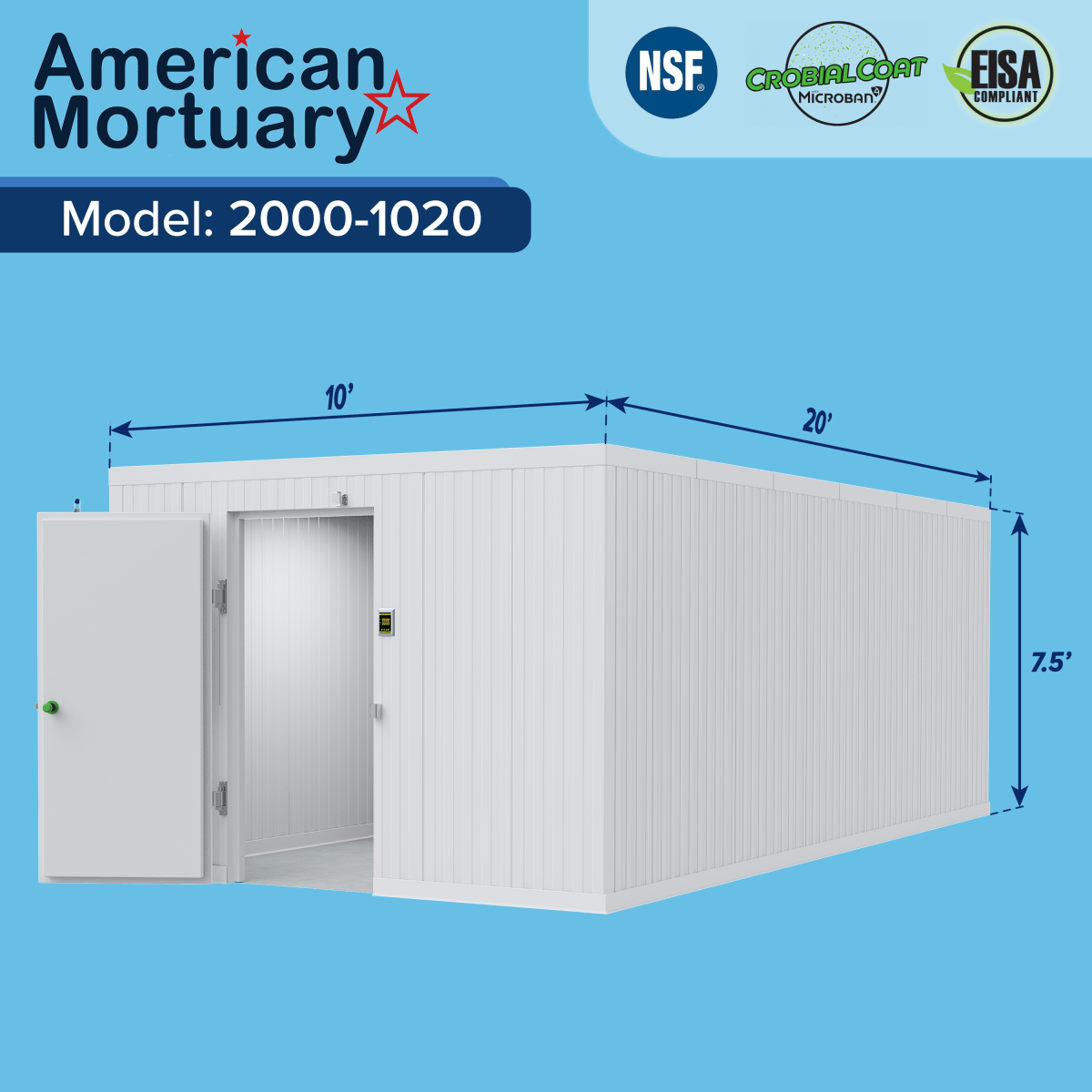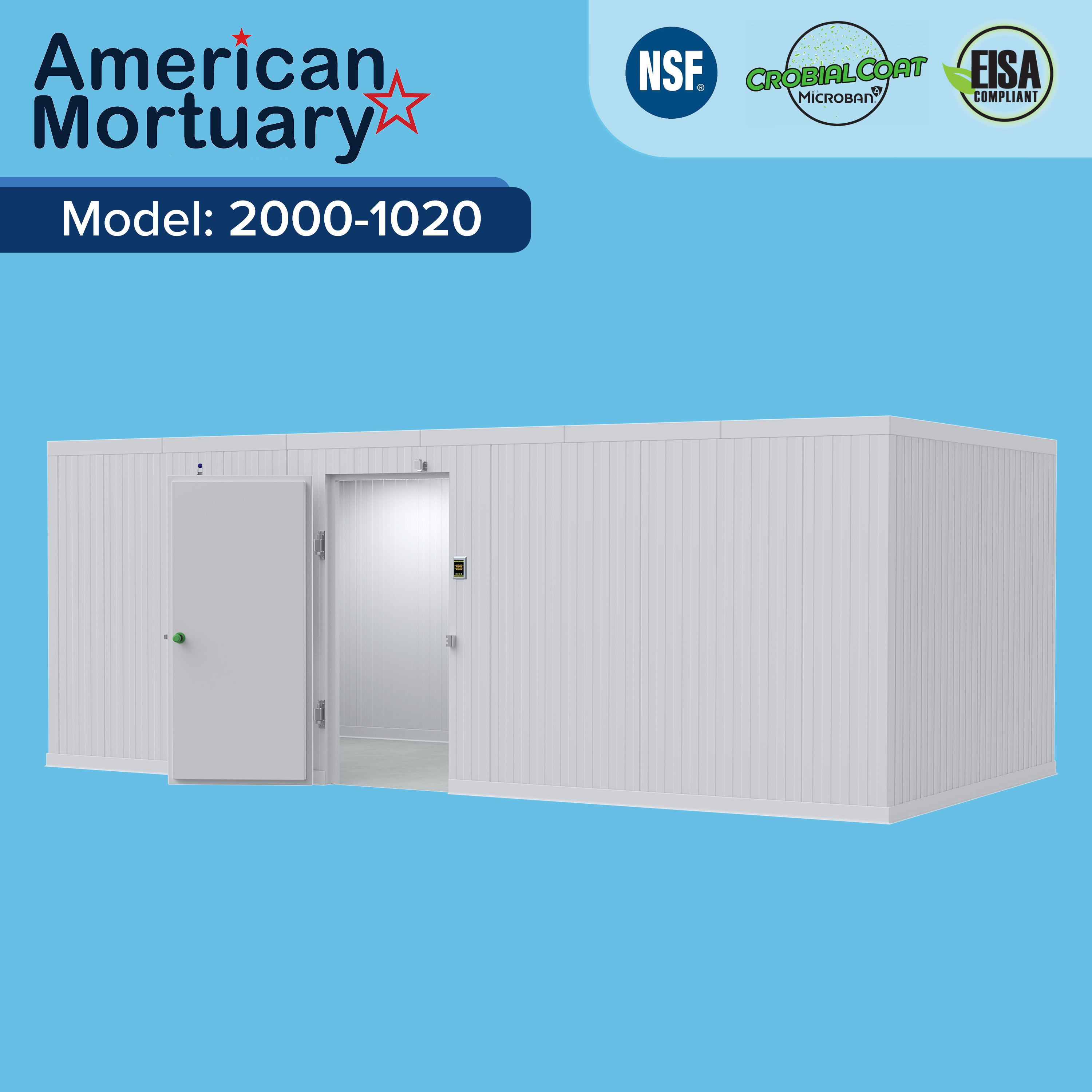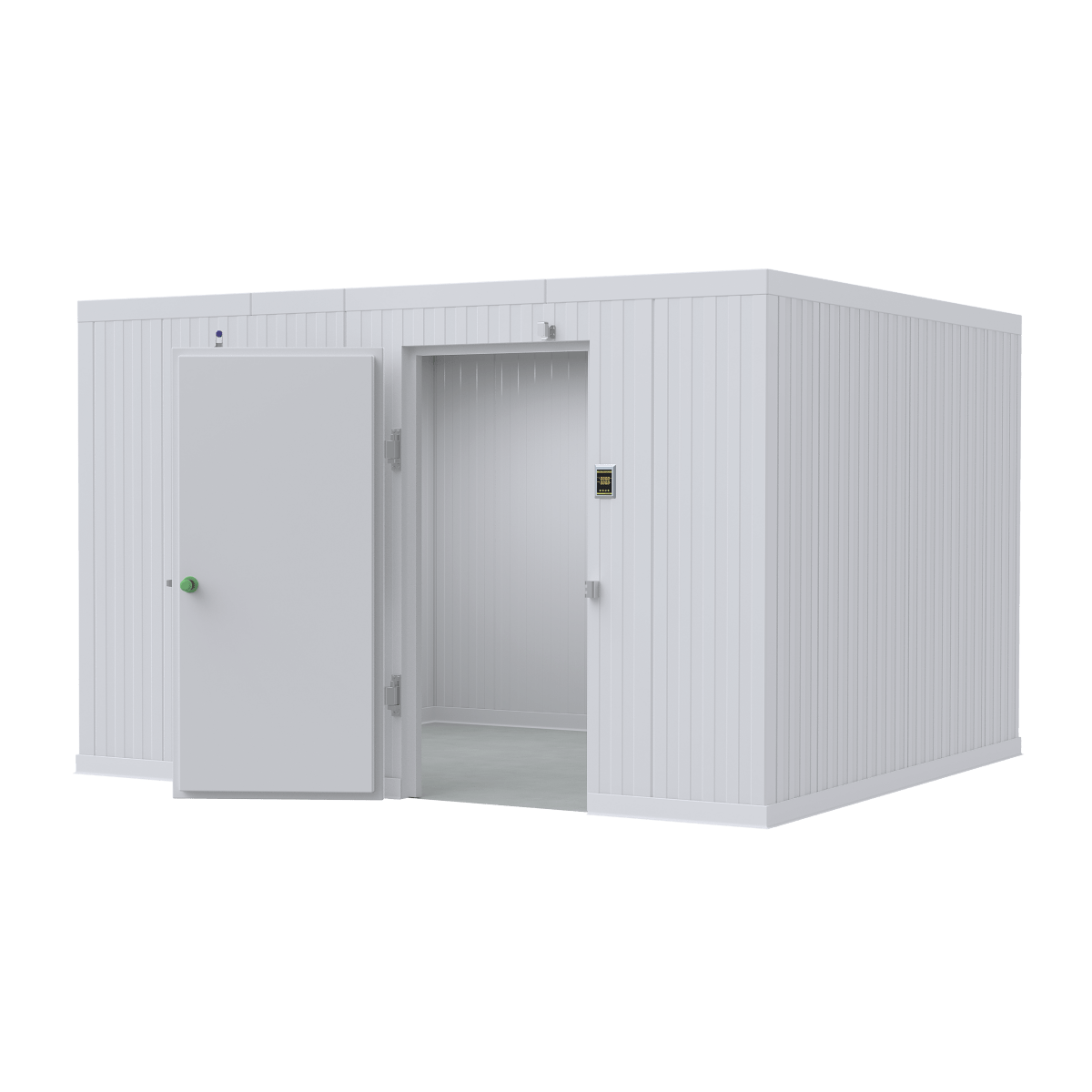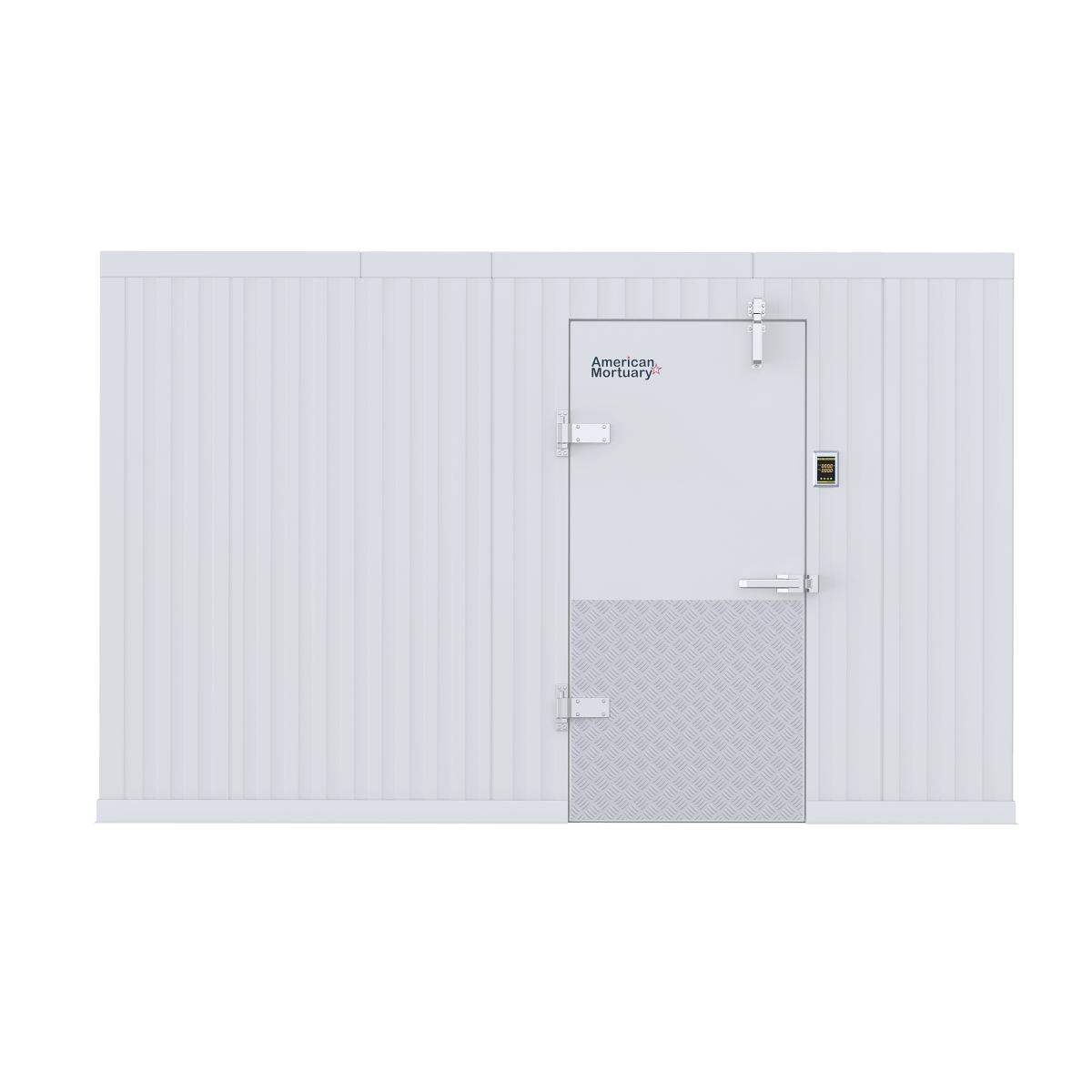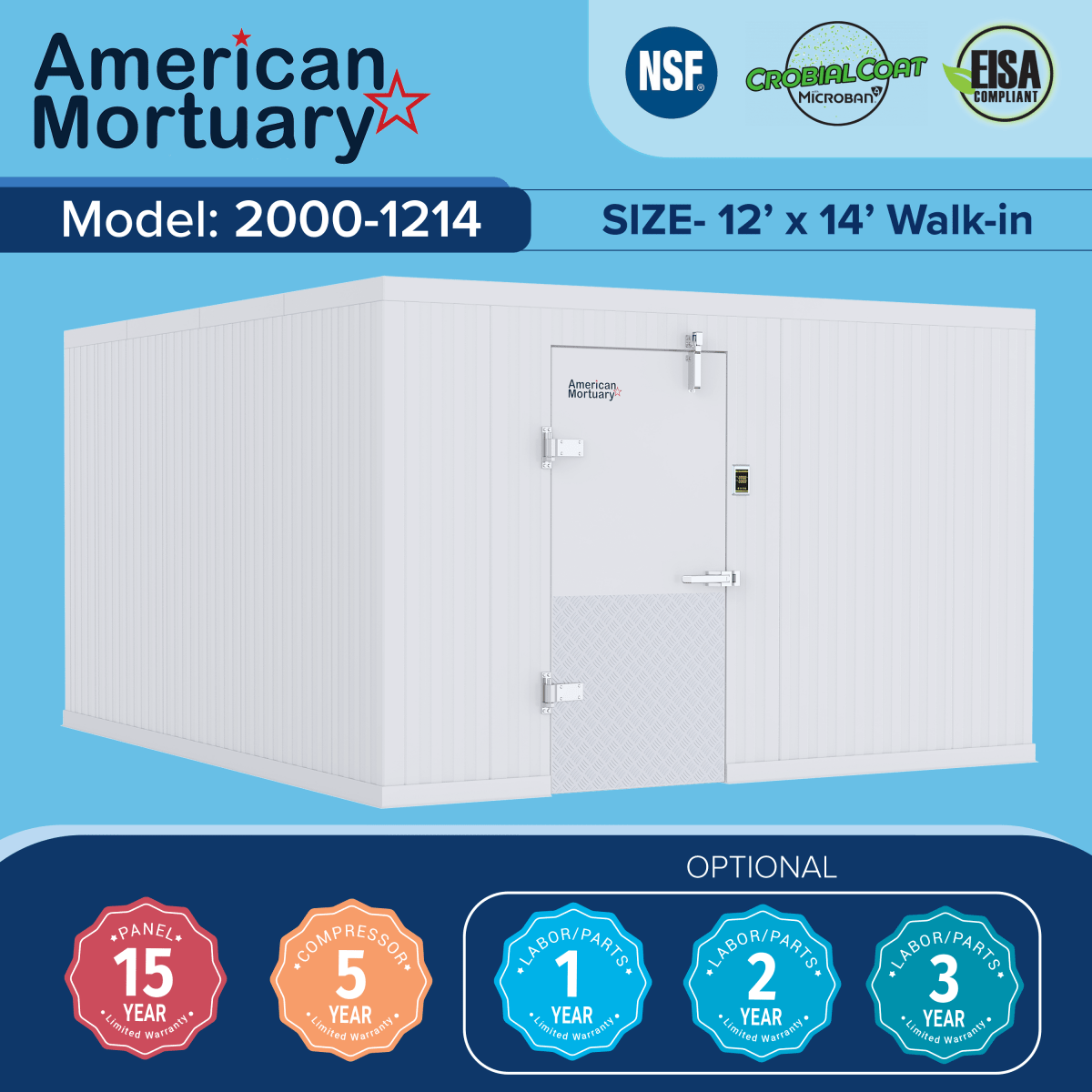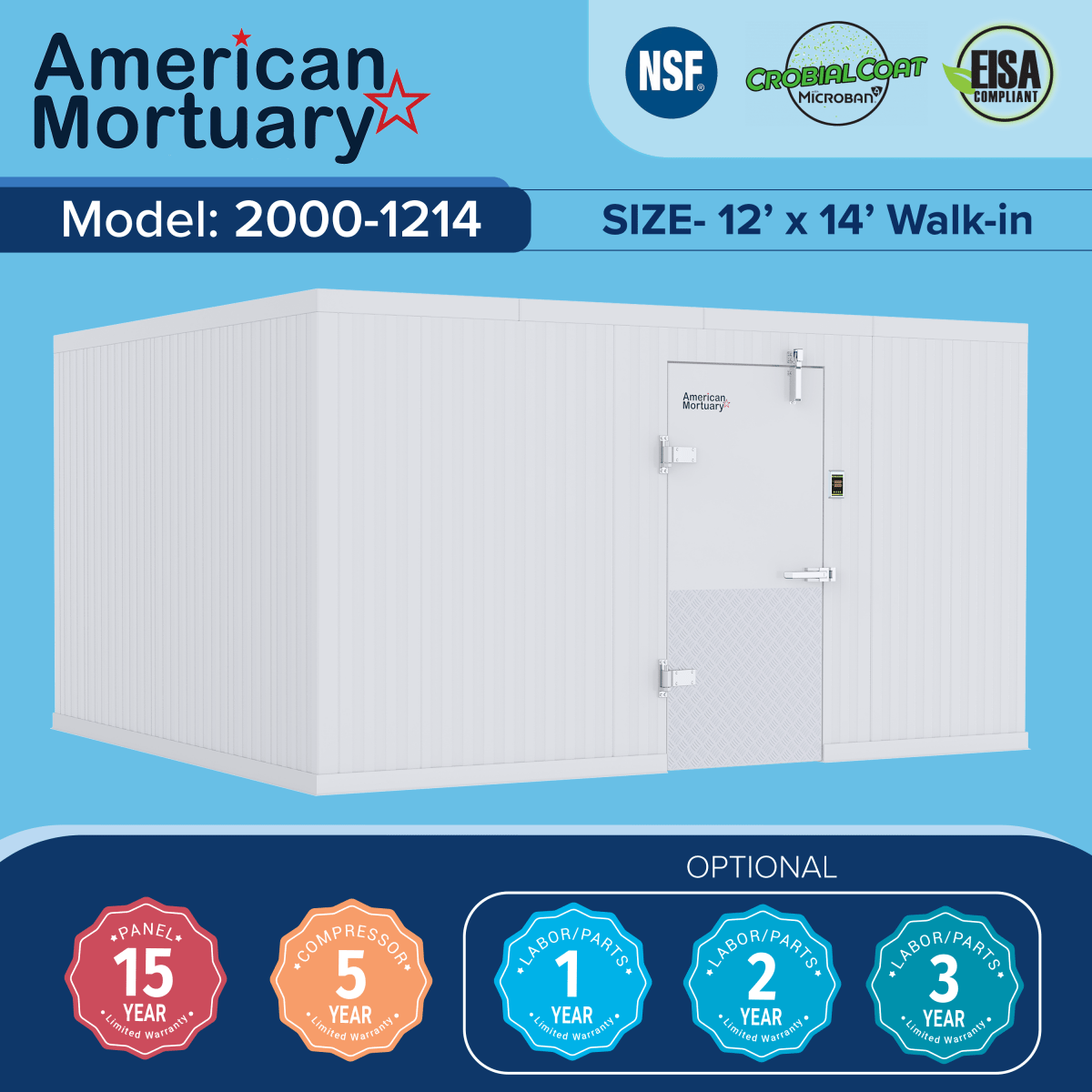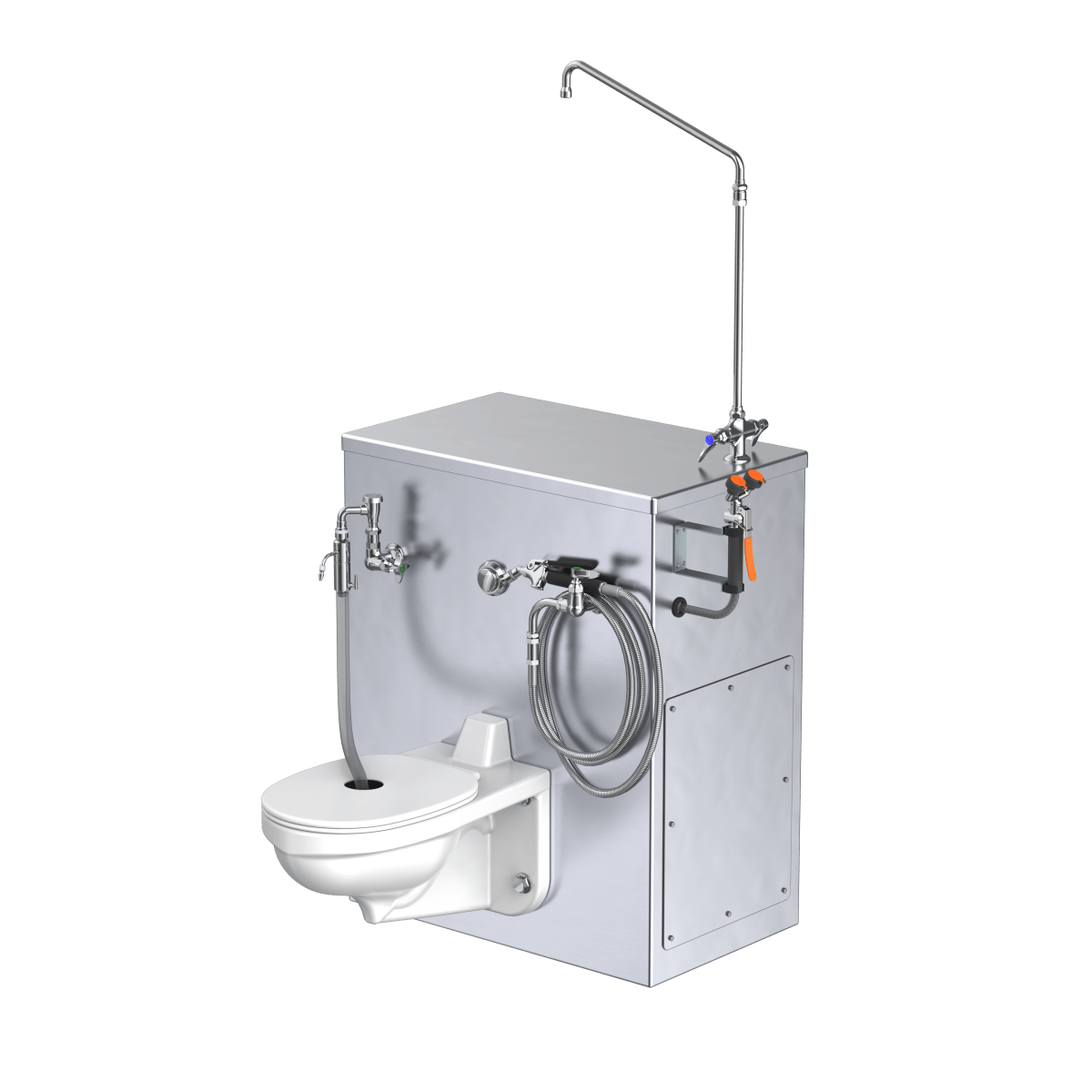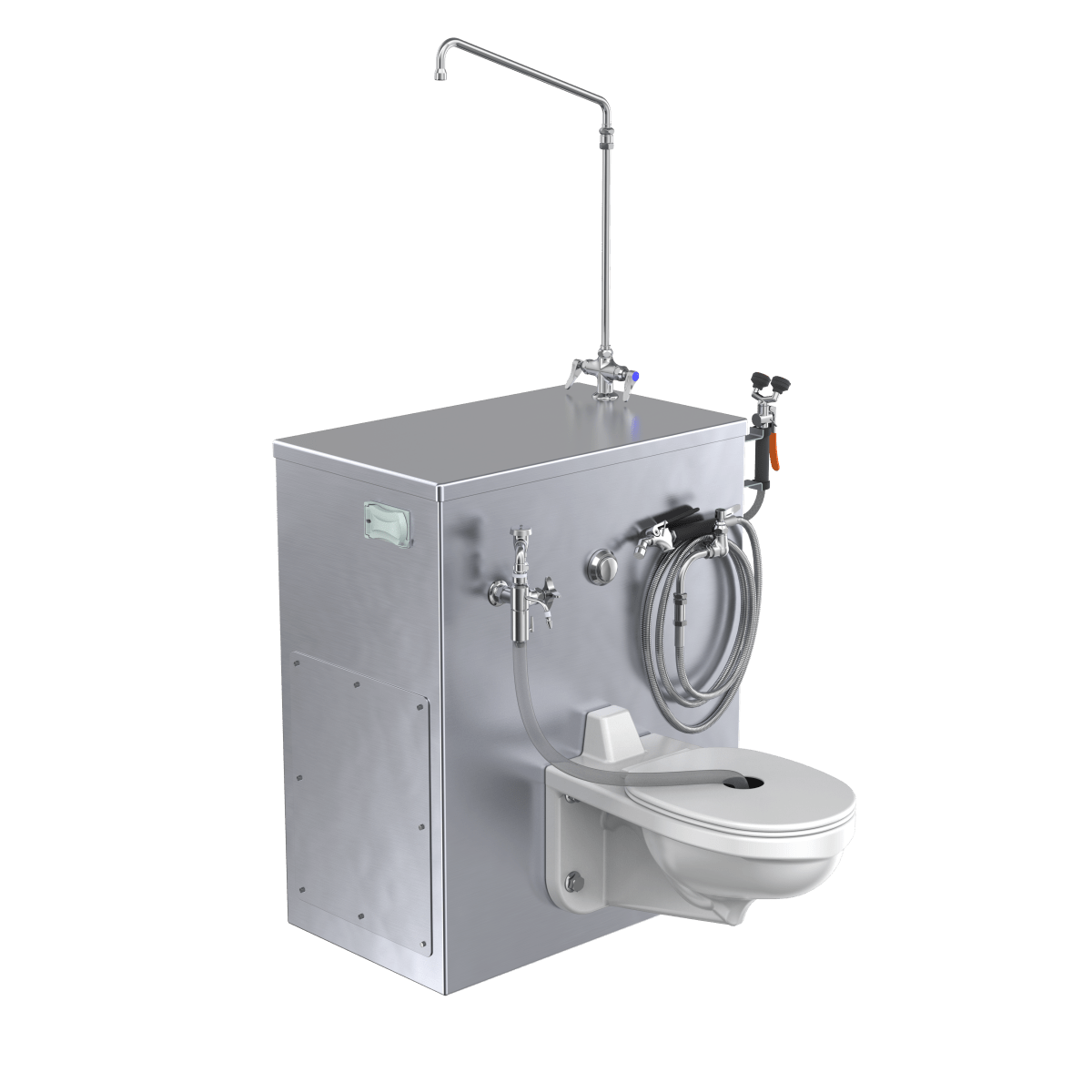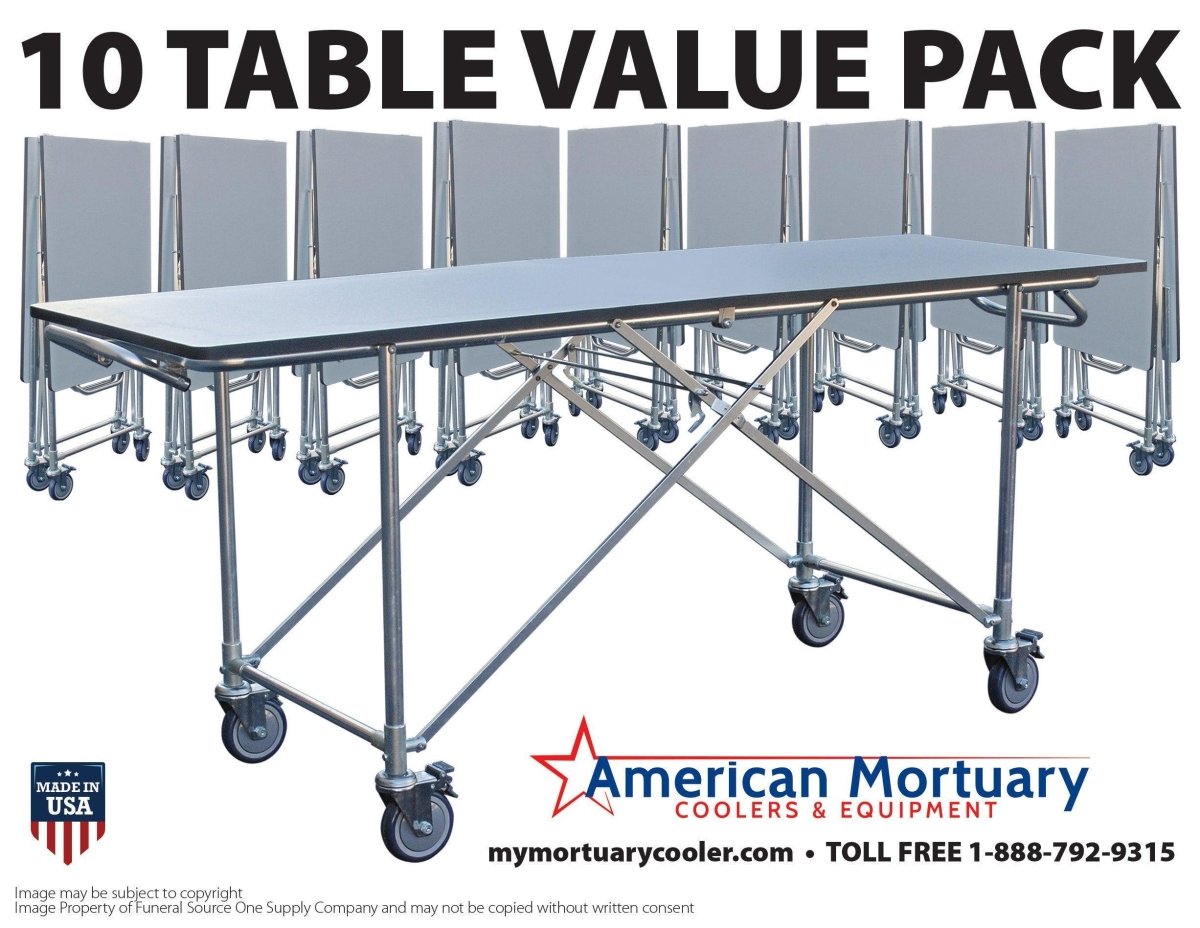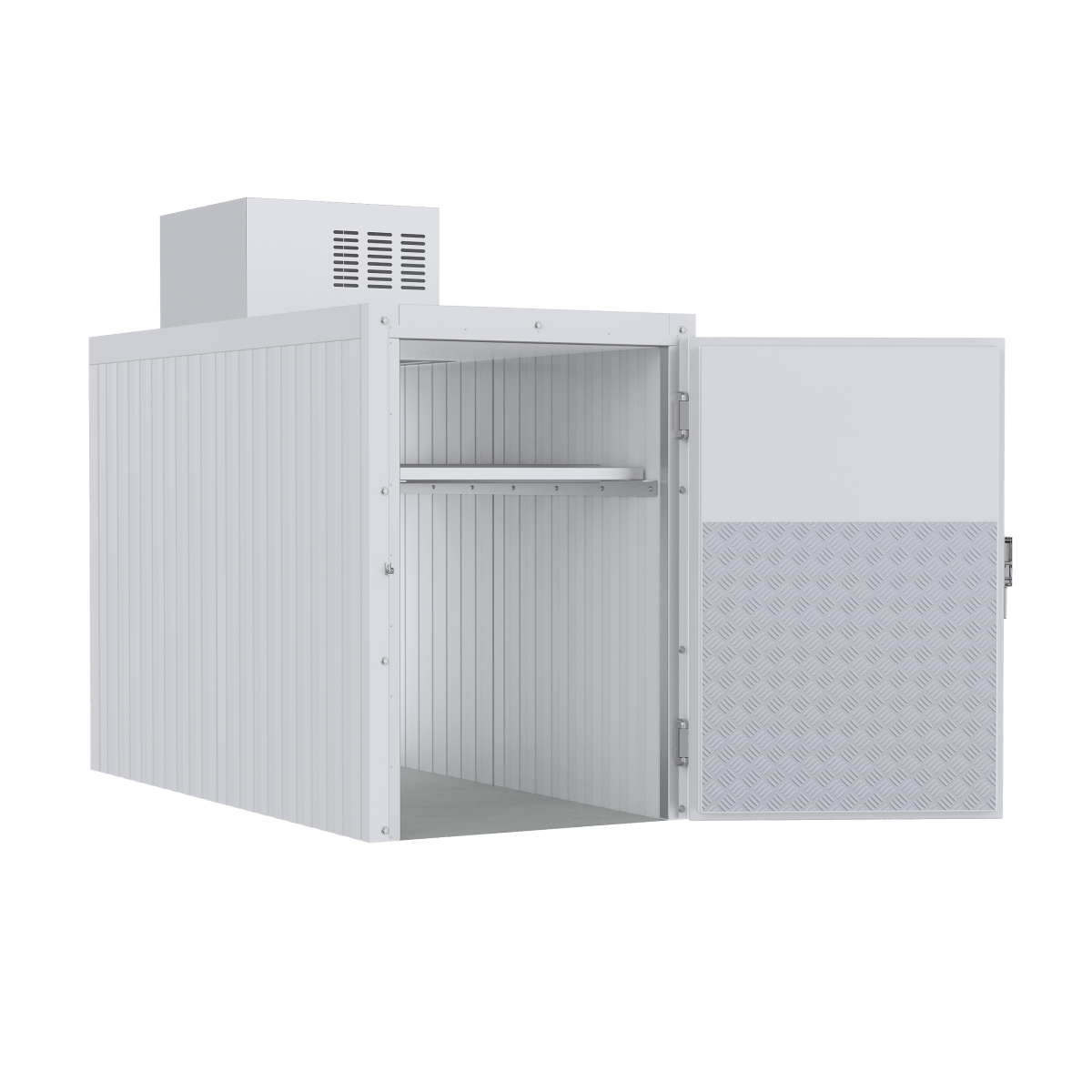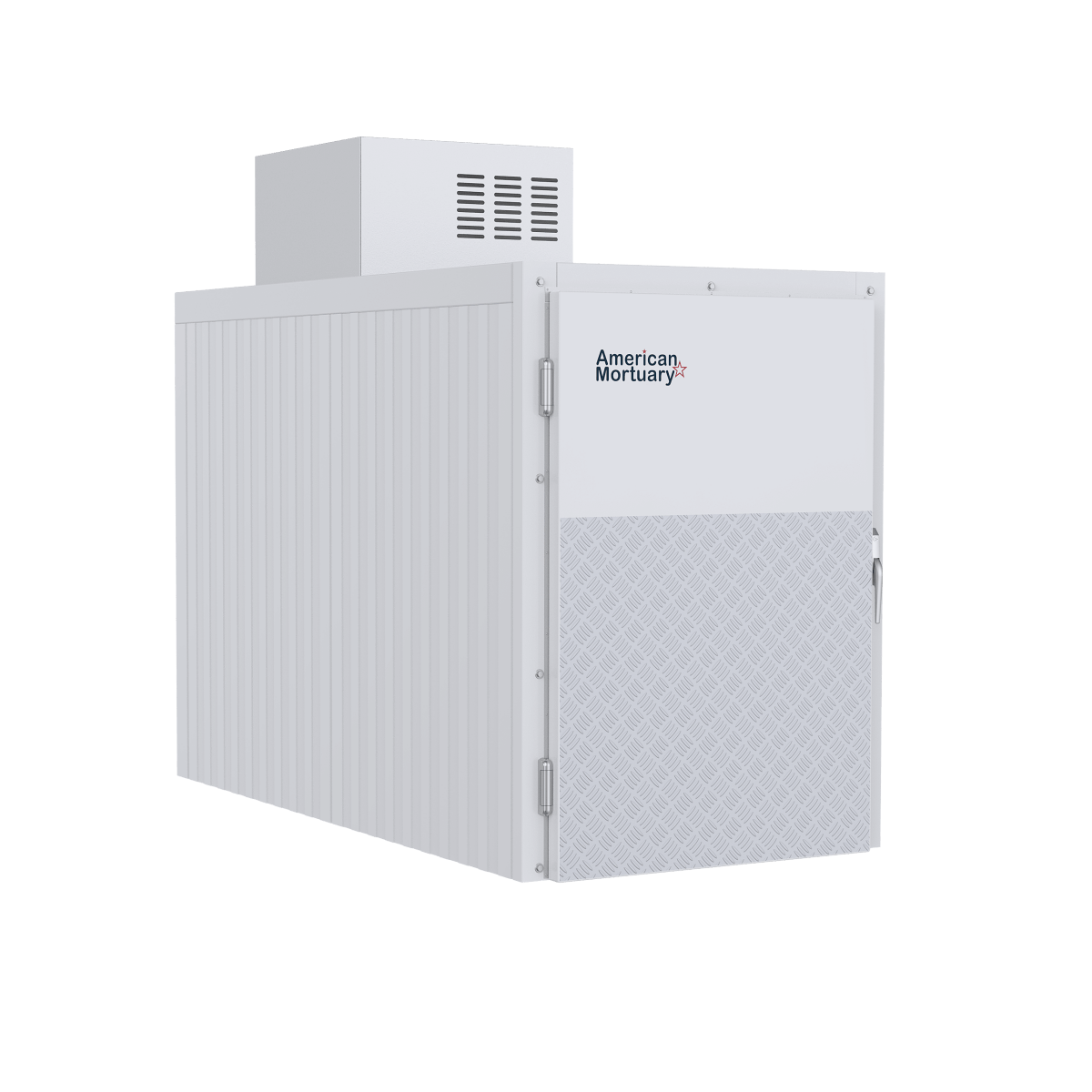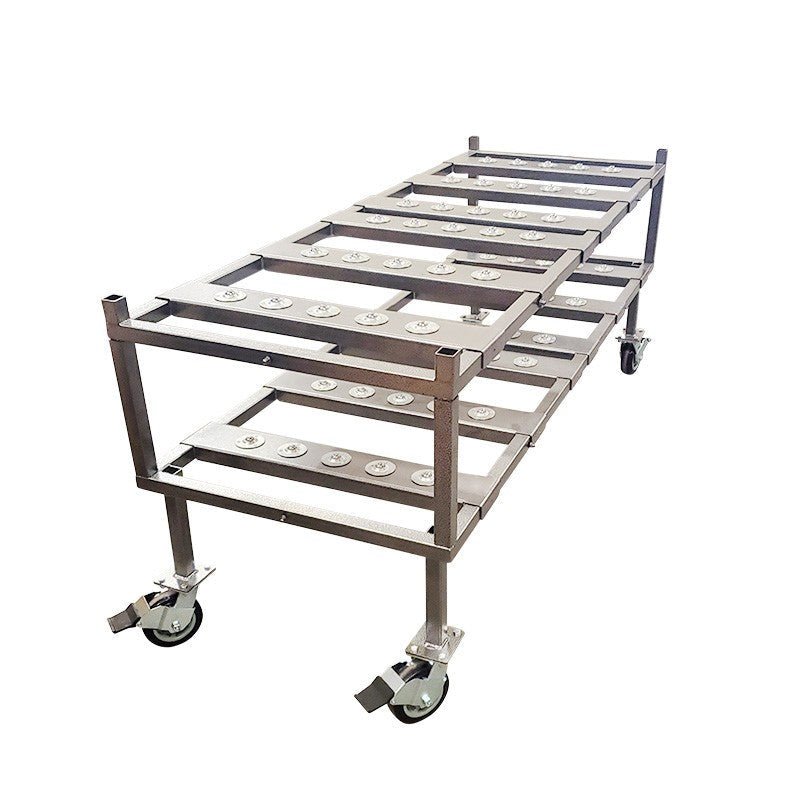Beat the Heat: Understanding Personal Cooling Technology
When the temperature climbs and sweat starts pouring, a body cooler can be your best friend. These clever devices are designed to lower your body temperature when the environment around you won't cooperate. Think of them as your personal climate control system that travels wherever you go.
A body cooler isn't just about comfort—though that's certainly a nice benefit. These specialized cooling solutions can prevent heat stress, improve physical performance, and even provide medical relief when you need it most.
Different cooling technologies serve different needs. Evaporative coolers like Cool Human™ work wonderfully in dry climates, giving you 1-2 hours of relief as water evaporates from the material. If you're in any environment, phase change materials maintain a constant 58°F for similar durations, creating a reliable cooling effect regardless of humidity. For high-intensity activities, liquid cooling systems like COMPCOOLER circulate chilled water through special garments, keeping you cool for anywhere from 2-14 hours depending on the model.
Some people prefer air flow systems that create a personal microclimate around your body, offering 12-14 hours of cooling power for both indoor and outdoor use. If you need quick recovery between intense activities, palm cooling devices target those special AVA zones (more on those later) for 15-30 minutes of rapid cooling.
What makes these personal cooling solutions so smart is their efficiency. Instead of wasting energy cooling an entire room or building, they focus cooling power exactly where it matters—on your body. This targeted approach can reduce CO₂ emissions by up to 90% compared to traditional air conditioning, making it both better for you and better for the planet.
The ideal body cooler varies depending on your situation:
Workers in hot environments often need industrial-grade cooling vests that can withstand tough conditions while providing reliable cooling throughout a long shift. Athletes gain competitive advantages with palm cooling devices that can rapidly lower core temperature between exertions, while recovery vests help muscles bounce back faster. Medical patients suffering from conditions like multiple sclerosis or chronic migraines find welcome relief from temperature-sensitive symptoms. Outdoor enthusiasts appreciate lightweight, portable options that don't require electricity but still deliver hours of cooling comfort.
I'm Mortuary Cooler, and I've spent over 15 years testing and supplying body cooler systems across the United States. While my primary focus has been mortuary facilities, this experience has given me unique insights into thermal regulation technology that applies to the living as well. I've learned that effective cooling isn't just a luxury—it's often a necessity for safety, performance, and wellbeing.

Key terms for body cooler:
What Is a Body Cooler and How It Works
Think of a body cooler as your personal climate control system. Unlike air conditioning that wastes energy cooling entire rooms, these clever devices target cooling directly where it matters most—your body.
When summer heat strikes or you're working in challenging environments, a body cooler works with your body's natural cooling systems to keep you comfortable and safe. These devices use four main cooling methods that work in harmony with how your body naturally regulates temperature:
Conduction happens when heat transfers directly from your warm skin to a cool surface—like pressing an ice pack against your neck on a hot day. Convection cooling uses moving air or liquid to whisk heat away from your skin. Evaporative cooling mimics your body's natural sweating process, while phase-change materials absorb heat as they melt at specific temperatures (typically around 58°F).
Your body already has an amazing built-in cooling system. When you get hot, blood vessels near your skin expand through vasodilation, bringing warm blood closer to the surface where heat can escape. At the same time, you begin sweating, which cools you as it evaporates. Body coolers simply give these natural processes a helpful boost.
"The best way of cooling down the body is through the body's own innate mechanism of evaporative cooling," as the makers of Cool Human™ explain. Their device creates gentle airflow under clothing to improve your body's natural cooling abilities.
The Science Behind Rapid Heat Extraction
The most effective cooling happens at your body's special heat-release zones called arteriovenous anastomosis (AVA) areas. These remarkable regions contain specialized blood vessels that act like superhighways for heat exchange.
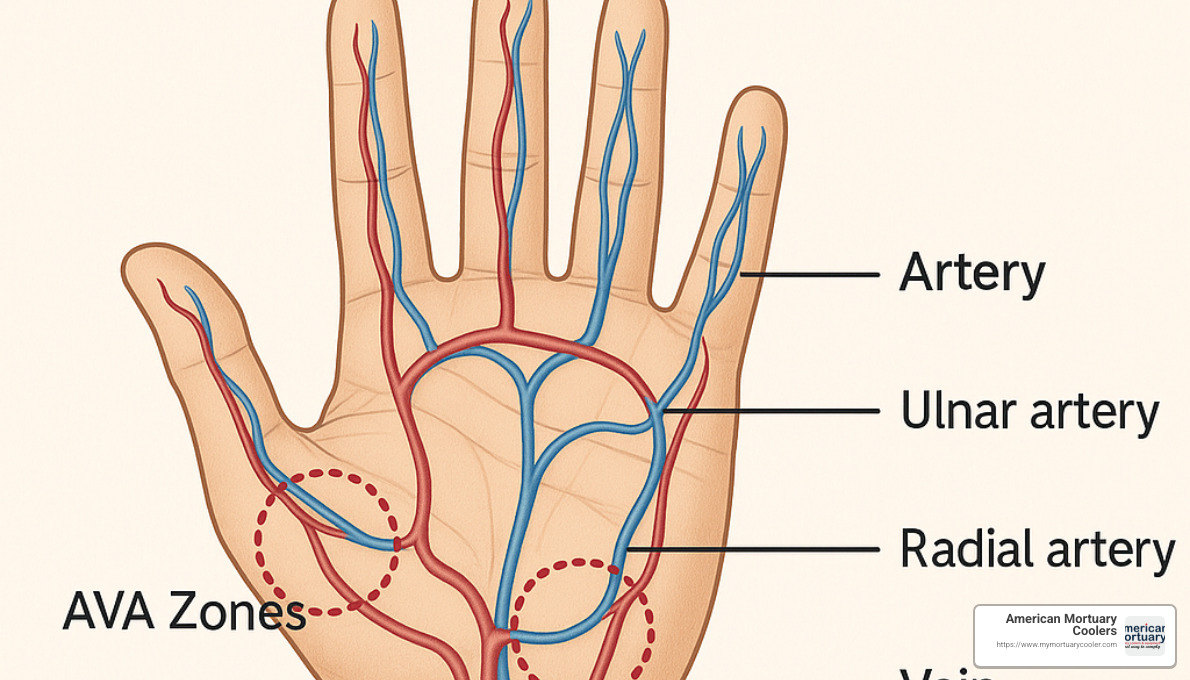
Your body's primary cooling hotspots include the palms of your hands, soles of your feet, and face (especially cheeks and forehead). This explains why splashing cold water on your face or running cool water over your wrists provides such immediate relief on hot days.
Stanford University biology professor Dr. Craig Heller finded that cooling the palms between exercise sets dramatically improved athletic performance. His research showed that these specialized blood vessels could rapidly pull heat from your body's core, allowing athletes to train longer and recover faster.
The Core Cooling Grip, designed based on this science, explains: "The Core Cooling Grip targets the palms, which are among the most effective areas for rapid body core cooling due to the presence of arterio-venous anastomoses (AVA's)."
How Long Does a Body Cooler Stay Cold?
The cooling duration varies widely depending on which technology you choose:
Evaporative wraps like neck bandanas typically provide 1-2 hours of cooling relief. They work beautifully in dry climates but lose effectiveness as humidity rises.
Phase-change packs maintain a consistent 58°F for 1-2 hours before needing reactivation. Cool 58® materials hold this precise temperature as they transition from solid to liquid, providing comfortable cooling without the shock of ice.
Water-based frozen packs like Kool Max® deliver powerful cooling for up to 2 hours but require access to a freezer for recharging.
Liquid circulation systems offer the longest relief, with portable options providing 2-3 hours of cooling and advanced systems like Cool Human™ delivering an impressive 12-14 hours of continuous use on a single charge.
At American Mortuary Coolers, we've applied our expertise in thermal regulation to develop solutions with exceptional longevity. Our industrial cooling systems are built for reliability in demanding environments, with some models capable of running continuously for days when connected to power.
| Cooling Technology | Power Source | Run Time |
|---|---|---|
| Evaporative Wraps | No power needed | 1-2 hours |
| Phase-Change Packs | No power needed | 1-2 hours |
| Air Flow Units | Battery | 8-14 hours |
| Personal Liquid Circulators | Battery | 2-7 hours |
| Industrial Liquid Circulators | AC Power | Continuous |
Our experience cooling in challenging environments has taught us that the right cooling technology can make all the difference in comfort, safety, and performance—whether you're an athlete pushing your limits or a worker in protective gear.
Body Cooler Technologies Side-by-Side
When it comes to staying cool, not all body cooler technologies are created equal. Let's take a friendly stroll through the cooling landscape to help you find your perfect match – because the right cooling solution depends on your specific needs, environment, and activities.

Evaporative & Phase-Change Wearables
Ever soaked a bandana in cold water and wrapped it around your neck on a hot day? That's evaporative cooling in its simplest form, and modern evaporative body coolers take this concept to the next level.
These lightweight wonders activate with a quick dunk in water. As the water evaporates, it pulls heat away from your body – no batteries required! E.COOLINE products, for instance, activate in just one second and keep you cool for about an hour per activation. For an extra chill, pop them in the fridge before use.
The catch? Humidity is their kryptonite. When the air is already saturated with moisture, evaporation slows down, making these less effective in muggy environments.
That's where phase-change technology steps in to save the day. These clever materials freeze at a specific temperature (typically 58°F or 14.4°C) and maintain that exact temperature as they melt. Unlike ice that starts painfully cold and gradually warms, phase-change materials deliver consistent, comfortable cooling.
"You can activate these packs in about 15 minutes using just ice water when freezers aren't available," explains one manufacturer. This makes them perfect for medical applications or situations where reliable cooling matters more than duration.
At American Mortuary Coolers, we've incorporated phase-change technology into several of our portable solutions because we appreciate their reliability and consistent temperature control – qualities that matter whether you're cooling a person or preserving dignity in our primary line of work.
Liquid Cooling Garments & Systems
If evaporative and phase-change coolers are like window fans, liquid cooling systems are central air conditioning for your body. These body cooler champions represent the most advanced personal cooling technology available today.
The concept is brilliantly simple: chilled liquid (usually water) circulates through tubes embedded in a garment, drawing heat away from your body through direct contact. It's like pressing a cold water bottle against your skin, but the coldness never fades.
A complete liquid cooling system typically includes a cooling unit that chills the liquid, a pump to keep it moving, insulated tubing to transport it, and specially designed garments with integrated channels.
COMPCOOLER systems offer what they call "personal liquid thermal regulation" with water reservoirs ranging from 1.5 to 5.0 liters, giving you control over both cooling intensity and duration. Their backpack-style units let you adjust the flow to match your activity level and temperature preferences.
The cooling power is impressive – these systems work in any environment regardless of humidity and can run for 2-14 hours depending on the model. The trade-off? They're heavier, more complex, and require a power source for the pump.
Japanese innovator COOLEX has partnered with universities to prove their liquid cooling systems effectively lower core body temperature and prevent heat-related illness in industrial settings. Their philosophy of "cooling only the worker rather than ambient air" aligns perfectly with our approach at American Mortuary Coolers – targeted cooling is always more efficient than trying to cool an entire space.
Stationary Worker Cooling Stations
Not everyone needs to move around while staying cool. For fixed workstations in hot environments, stationary cooling stations offer a powerful solution without requiring special garments.
These clever systems direct cooled air or water to specific contact points on your body – like your palms, face, or neck – creating personal cooling zones right where you need them. It's like having a targeted air conditioner that follows the "cool the person, not the room" principle.
COOLEX offers both stationary "Air type" and wearable "Wear type" cooling modules to accommodate different workplace needs. Their systems have earned credibility through university research validating their effectiveness.
At American Mortuary Coolers, we understand fixed-location cooling better than most. Our Tennessee-based team has applied decades of cooling expertise to develop stationary solutions that deliver consistent temperature regulation with minimal maintenance – because when cooling matters, reliability isn't optional.
While these systems offer powerful cooling capacity without requiring special clothing and can serve multiple workers with continuous operation, they do require installation and are limited to fixed locations. The initial investment is higher, but for established work areas, the benefits often justify the cost.
When choosing between these technologies, consider your specific needs – are you in a humid environment? How long do you need cooling? Do you need to move around? Your answers will guide you to the perfect body cooler solution.
Benefits and Use Cases: Why a Body Cooler Beats AC or Fans
Traditional cooling methods like air conditioning and fans have their place, but body coolers offer unique advantages that make them the smarter choice in many situations. When you understand these benefits, it's easy to see why personal cooling technology has become so popular across different industries.

Let's face it – heat-related illness is serious business. Whether you're working outdoors, competing in sports, or dealing with certain medical conditions, a body cooler can be a lifesaver by helping maintain a safe core temperature. Instead of wasting energy cooling empty spaces like traditional AC does, personal cooling targets the heat where it matters most – your body.
The efficiency difference is striking. According to E.COOLINE, personal cooling saves over 90% in CO₂ emissions compared to conventional cooling systems. Plus, you can take most body coolers anywhere you go, providing relief outdoors, in vehicles, or in buildings without air conditioning.
For athletes, a body cooler like the CorePak™ can lower surface temperature up to 20+ degrees in minutes, helping maintain peak performance longer when every second counts.

Industrial Workers & First Responders
Imagine wearing heavy protective gear while working in sweltering heat – that's the daily reality for many industrial workers and first responders. This dangerous combination can quickly lead to heat stress, reduced focus, and serious health risks.
"Working with COOLSHIRT SYSTEMS allowed me to help design a tool by lineman for lineman," shared a compliance coordinator from Alabama Power. Their A.R.C. Vest meets strict safety standards while providing crucial cooling – proving you don't have to choose between safety and comfort.
The highway maintenance crew in Heidenheim has been using cooling vests and headgear since 2019, with glowing reviews: "We are very satisfied... can only recommend them to everyone." When workers stay cool, they stay safer, more focused, and can work longer without needing frequent cooling breaks.
At American Mortuary Coolers, we've taken our cooling expertise beyond our traditional industry to develop solutions for workers facing high temperatures across America – from the dry heat of Arizona to the sticky humidity of Florida.
Athletes & Outdoor Enthusiasts
Athletes were among the first to accept body cooler technology, quickly recognizing how maintaining optimal body temperature could give them a competitive edge.
The Core Cooling Grip targets the palms – those special high-blood-flow areas – for rapid cooling between exercise sets. As they put it, "keeping your muscles at an 'okay-to-work' temperature is one of the most underrated ways to optimize performance."
Runners find they can "run further with less fatigue." Cyclists maintain higher power output in hot conditions. Tennis players recover faster between points. Football players avoid heat exhaustion during those brutal summer training sessions.
Even weekend warriors benefit from body coolers during activities like hiking, fishing, and camping. Nothing ruins an outdoor trip faster than overheating, and a personal cooling solution can make the difference between misery and enjoyment.
Health & Medical Communities
For some people, body coolers aren't just about comfort – they're about quality of life.
People with Multiple Sclerosis often experience debilitating heat sensitivity (called Uhthoff's phenomenon). One MS patient's testimonial about the E.COOLINE cooling vest speaks volumes: "Immediately after activation, I was a different person... You have helped me more than any doctor ever has in years."
Body coolers also provide relief for migraine sufferers. One patient shared: "I have much fewer pain attacks and feel much fitter, I am more efficient during the day and not so tired."
Women experiencing hot flashes from menopause or medical treatments find blessed relief through cooling vests and wraps. And for those with dysautonomia (disorders affecting temperature regulation), companies like COMPCOOLER offer specialized thermal regulation systems that can dramatically improve daily functioning.
Environmental & Cost Advantages
The environmental benefits of choosing a body cooler over traditional air conditioning are impressive and meaningful.
When you cool just yourself instead of an entire room or building, you dramatically slash energy consumption. E.COOLINE claims their climate-neutral cooling avoids over 90% of CO₂ emissions compared to conventional systems – that's a significant environmental win.
Many cooling systems rely on refrigerants that harm the ozone layer. Personal cooling often eliminates or reduces the need for these chemicals. As Cool Human™ points out: "Air conditioners consume large amounts of energy and often use ozone-depleting refrigerants," while their approach creates "your own personal cooling microclimate" instead.
While quality body coolers require an initial investment, the energy savings add up quickly. We've seen this at American Mortuary Coolers – our targeted cooling solutions reduce energy costs in mortuary installations from coast to coast, proving that what's good for the planet can also be good for the budget.
Choosing the Right Body Cooler: Buying Guide & Top Brands
Selecting the ideal body cooler can feel overwhelming with so many options available. But don't worry – I'll guide you through the factors that really matter so you can find your perfect match for staying cool when temperatures rise.
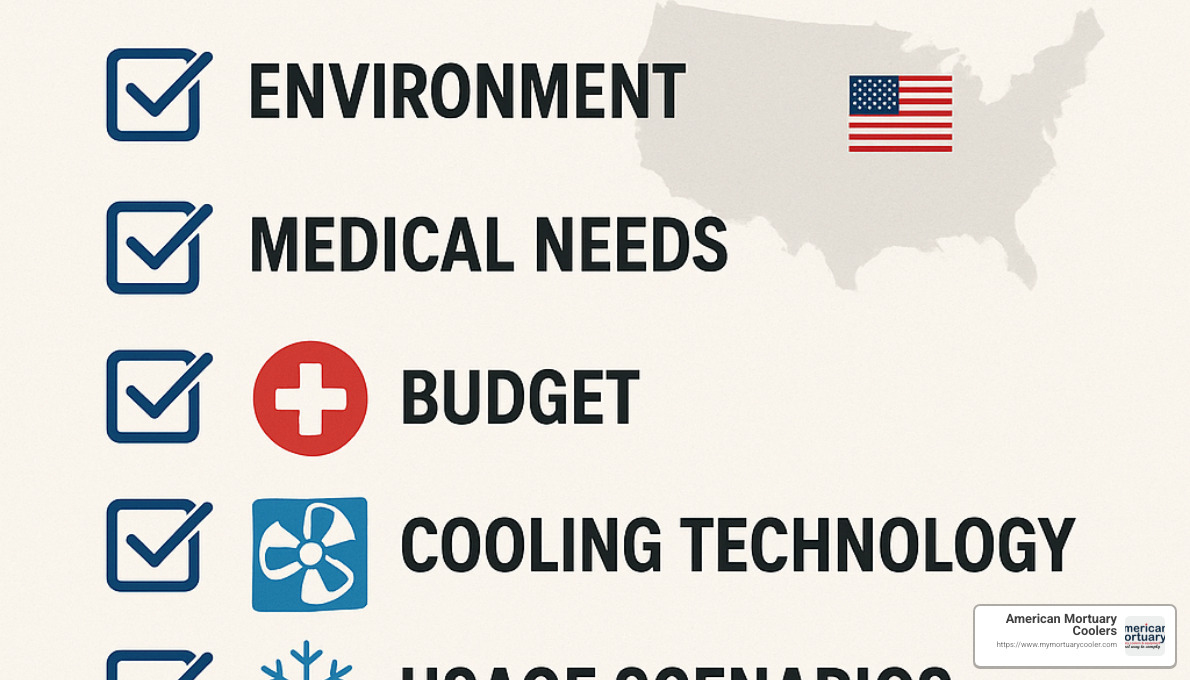
Your environment plays a huge role in which cooling technology will work best. If you're in Florida or other humid regions, you'll want to avoid evaporative coolers – they simply won't work well when the air is already moisture-laden. Instead, opt for liquid cooling or phase-change options that work regardless of humidity levels. On the flip side, if you're in Arizona or other dry climates, evaporative cooling will feel like magic!
The intensity of your activity also matters tremendously. High-energy activities generate more body heat, requiring more powerful cooling. That's why professional athletes and industrial workers often invest in liquid cooling systems – they provide the most robust cooling power for demanding situations. For moderate activities like gardening or casual hiking, simple phase-change or evaporative options might be all you need.
How long do you need to stay cool? This question is crucial but often overlooked. If you only need relief for an hour or two, simple evaporative wraps or phase-change packs will do the job. But if you're working an 8-hour shift in a hot environment, you'll need systems with replaceable batteries or continuous power options. At American Mortuary Coolers, we've learned from our commercial installations that matching cooling capacity to duration needs prevents disappointment.
Power availability is another practical consideration. Will you have access to electricity? If not, passive cooling options like evaporative or phase-change products are your best bet. Limited power? Look for energy-efficient systems like air flow fans. And if steady power is available, you can enjoy high-performance liquid cooling without concerns.
Your mobility requirements will narrow your options further. If you're constantly on the move, lightweight wearable solutions are ideal. If you're somewhat mobile but return to a central location, backpack or belt-mounted systems offer a good balance. For stationary workstations, larger cooling stations provide maximum power without weight concerns.
Safety First: Using a Body Cooler Correctly
Body coolers are generally safe, but a few precautions will ensure your cooling experience stays comfortable and worry-free.
Always handle batteries according to manufacturer guidelines. This means proper charging, storage, and avoiding extreme heat which can damage batteries or create safety hazards. One customer learned this the hard way when leaving their cooling unit in a hot car damaged the battery beyond repair.
Cold injuries are rare but possible with direct skin contact with very cold surfaces. One manufacturer wisely notes: "If activated in a freezer, additional layers of insulation between the wrap and body is necessary to wear safely and comfortably." This simple precaution prevents uncomfortable cold burns.
Don't forget proper layering! Phase-change and ice-based coolers should always have the recommended clothing layers between the cooling element and your skin. Think of it like using an ice pack – you wouldn't put it directly on bare skin for extended periods.
Here's something people often miss: body coolers help prevent visible sweating, but you're still losing water. Maintain proper hydration even when you don't feel sweaty. Your body is still working to regulate temperature.
If you have reduced sensation due to medical conditions, make it a habit to regularly check skin under cooling devices for any signs of irritation or damage. This simple check can prevent problems before they start.
Snapshot of Leading Solutions & Flagship Products
The body cooler market includes many impressive innovations, each with unique strengths:
Cool Human™ Portable Body Cooler creates air flow under clothing, offering an impressive 12-14 hours of cooling on a single charge. What makes it special is being "invisible under clothing" while working even in poor ventilation or high humidity. Office workers especially love this discreet solution.
E.COOLINE Cooling Vests use remarkable evaporative technology with their SX3 3D nonwoven material. While they need reactivation after about an hour, they bind an impressive 10 times their weight in water. Outdoor enthusiasts in dry climates and environmentally-conscious users appreciate their climate-neutral cooling approach.
COMPCOOLER's Backpack ICE Water Cooling System circulates chilled liquid through special garments, with bladder sizes from 1.5L to 5.0L for different duration needs. Its flow control lets you adjust cooling intensity to match your activity level – perfect for athletes and industrial workers facing extreme heat.
CorePak™ uses phase-change technology with an interesting twist – "the more you move, the colder the pak gets." This makes it ideal for active users who need cooling during motion, with a runtime the manufacturer claims "lasts for days."
The Core Cooling Grip targets those special AVA zones in your palms we discussed earlier. Based on Stanford research, it provides 15-30 minutes of cooling per session – just enough for athletes between sets or intervals needing quick recovery.
At American Mortuary Coolers, we've applied our thermal regulation expertise across various cooling challenges in Atlanta, Chicago, Dallas, Los Angeles and beyond. While our primary focus is mortuary cooling, the principles translate perfectly to personal cooling solutions.
Budget vs. Premium: What to Expect
Your budget will naturally influence your options, but understanding what you get at different price points helps make smart investments.
Entry-level options ($30-100) include simple neck wraps, cooling towels, and basic evaporative vests. They typically provide 1-2 hours of cooling before needing reactivation and use basic fabrics with water-retention properties. While affordable, expect a lifespan of 1-2 seasons with regular use. These are perfect for occasional relief but may disappoint for demanding daily use.
In the mid-range ($100-500), you'll find quality evaporative vests, well-designed phase-change products, and basic air flow systems. These offer 2-8 hours of cooling depending on technology and use more durable fabrics with better insulation. Features like adjustable fit, better coverage, and washable components make these more versatile, with a typical lifespan of 2-3 years with proper care.
Premium solutions ($500-1,700+) represent professional-grade liquid cooling systems with advanced technology. They can provide up to 14 hours of cooling or run continuously with power. Built with industrial-grade components and medical-grade tubing, they offer precise temperature control and extensive coverage. With proper maintenance, expect 5+ years of service and replaceable components when needed.
For example, COMPCOOLER's thermal chiller system offers impressive 200W cooling and 120W heating capacity at $1,699, while their motorcycle chiller unit provides 200W cooling capacity for $1,199.
When investing in premium systems, you're not just buying more powerful cooling – you're getting warranties ranging from 1-5 years, replacement parts availability, technical support, and greater durability in harsh environments.
At American Mortuary Coolers, our experience with commercial-grade cooling systems has taught us that initial quality directly impacts long-term performance. As we often tell our funeral home clients: "Buy once, cry once." This wisdom applies equally to personal body coolers.
Frequently Asked Questions about Personal Body Coolers
Will a body cooler work in high humidity?
If you live somewhere steamy like Florida or Louisiana, you've probably wondered if a body cooler will actually work when the air already feels like a wet blanket. The answer depends on which cooling technology you choose.
Evaporative coolers (like those cooling towels you dampen and snap) struggle in humid environments. They work by evaporating water to create cooling—but when the air is already moisture-saturated, that evaporation happens too slowly to cool you effectively. Living in our Southeast Region or along the Gulf Coast? You might want to skip the evaporative options.
On the brighter side, both phase-change and liquid cooling technologies work beautifully regardless of humidity levels. The Cool 58® phase change packs, for example, maintain "a comfortable, constant cooling temperature of 58ºF" whether you're in desert-dry Arizona or swampy Louisiana.
As one manufacturer puts it: "Phase change packs freeze at 58ºF (14.4°C) and provide a comfortable, constant cooling temperature of 58ºF for up to 1 to 2 hours. Ideal choice when freezers are not available."
Our recommendation? If summer feels like walking through soup where you live, invest in liquid cooling or phase-change body coolers for reliable relief.
Can I wash my body cooler?
Nothing's worse than a cooling vest that works great but smells like the inside of a gym locker. Fortunately, most body coolers can be cleaned—though how you clean them varies by type.
For fabric-based products like cooling vests and wraps, washing is usually straightforward. E.COOLINE, for instance, recommends: "Wash separately at 30°C on a wool/hand-wash cycle, low spin, pH-neutral detergent; industrial washing is also possible." Most textile cooling products handle gentle machine washing well, but always double-check the manufacturer's instructions first.
Liquid cooling systems require a bit more care. You can typically wash the garment portion after disconnecting it from pumps and tubing. For the tubing itself, flush with clean water and a small amount of antibacterial solution if the manufacturer suggests it. Just remember—never submerge pumps or electronic components unless you're hoping to buy a replacement!
For phase-change products, wipe down the outer fabrics and the phase-change packs themselves with a damp cloth. Don't submerge the packs, as this might compromise their cooling properties.
Regular cleaning is especially important in shared environments (something our industrial customers know well). Many premium body coolers now include antibacterial treatments to prevent that not-so-fresh feeling and extend the product's life.
Are body coolers safe for children or seniors?
Body coolers can absolutely be safe for both the young and young-at-heart, but they do require some special attention.
For children, size and supervision matter most. Look for products specifically designed for smaller bodies, and avoid direct-contact cooling that might be too intense for sensitive skin. Always keep an eye on kids using cooling products to prevent them from getting too chilled—children may not always communicate when they're uncomfortable.
Seniors face different challenges. Those with reduced sensation might not notice if a cooler becomes uncomfortably cold. Easier activation mechanisms are important for those with arthritis or limited dexterity. Temperature-regulated options like 58°F phase-change materials offer safer, more consistent cooling without the risk of getting too cold.
For both groups, start with shorter cooling sessions to see how they respond. Monitor for any signs of discomfort, and choose products with gentle, consistent cooling rather than intense cold. If there are underlying health conditions, a quick chat with a healthcare provider before using a body cooler is always a smart move.
In our years at American Mortuary Coolers, we've found that phase-change materials often work best for vulnerable populations. They provide reliable, gentle cooling without risking the discomfort of too-cold temperatures—keeping everyone comfortable without compromise.
Conclusion
As temperatures climb and energy costs soar, body coolers offer a refreshing solution that balances personal comfort with environmental responsibility. I've spent years exploring cooling technologies, and the evidence is clear: cooling the person instead of the space just makes sense.
From simple evaporative neck wraps that cost less than dinner for two, to sophisticated liquid cooling systems that rival the price of a decent laptop, there's a cooling solution waiting for you. The beauty of personal cooling is its precision – delivering relief exactly where it matters most.
Think about it – why cool an entire 2,000 square foot home when your 2 square feet of body is all that really needs cooling? By focusing cooling power directly on your body, body coolers not only provide more effective relief but also slash energy consumption. Many of our customers report utility savings that pay for their cooling investment within a single season.
Whether you're an athlete pushing through that final mile, a construction worker facing scorching temperatures, someone managing MS symptoms, or just trying to enjoy your porch in August, personal cooling technology delivers benefits that traditional cooling methods simply can't match.
Here at American Mortuary Coolers, we've built our reputation on understanding thermal regulation inside and out. While we primarily focus on mortuary cooling systems (it's right there in our name!), the cooling principles we've mastered apply universally. Our team serves customers from coast to coast – from our home base in Johnson City, Tennessee, to Los Angeles and everywhere in between – and we're passionate about cooling solutions that actually work.
Remember our simple philosophy: cool the person, not the space. This small shift in thinking not only improves your comfort and performance but represents a more sustainable approach in our increasingly warm world. Your body will thank you, your wallet will thank you, and the planet will thank you too.
For more information about our cooling expertise and custom solutions, visit our full cooling expertise & custom solutions.


